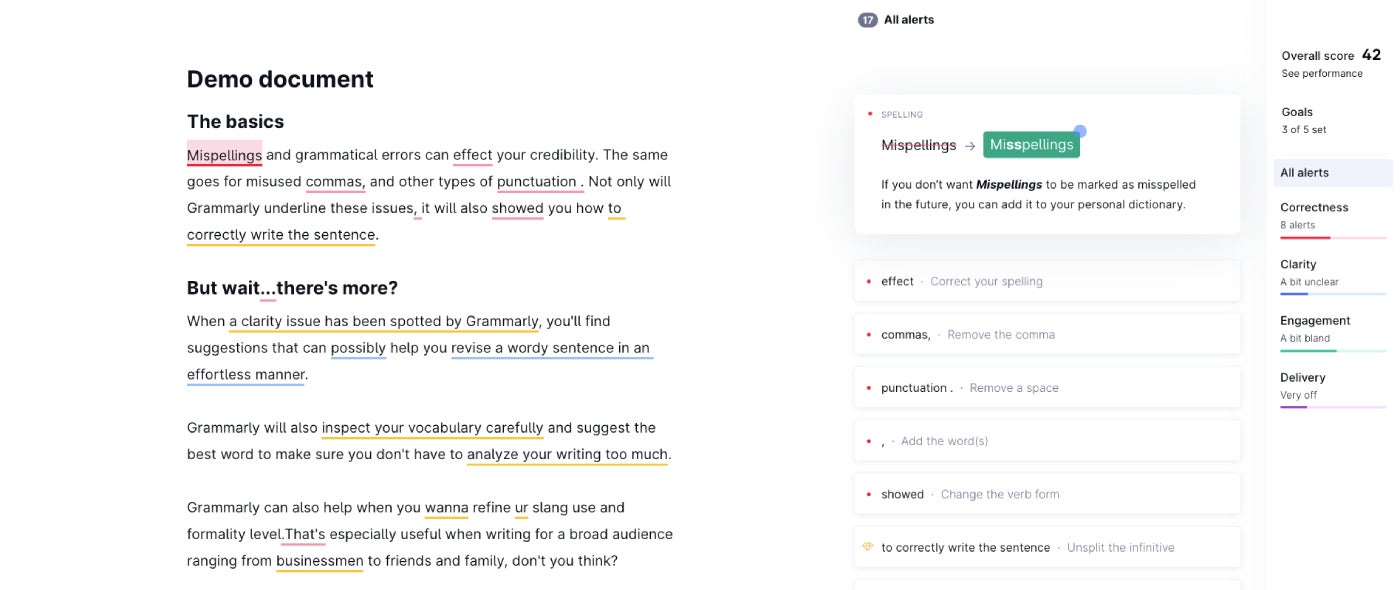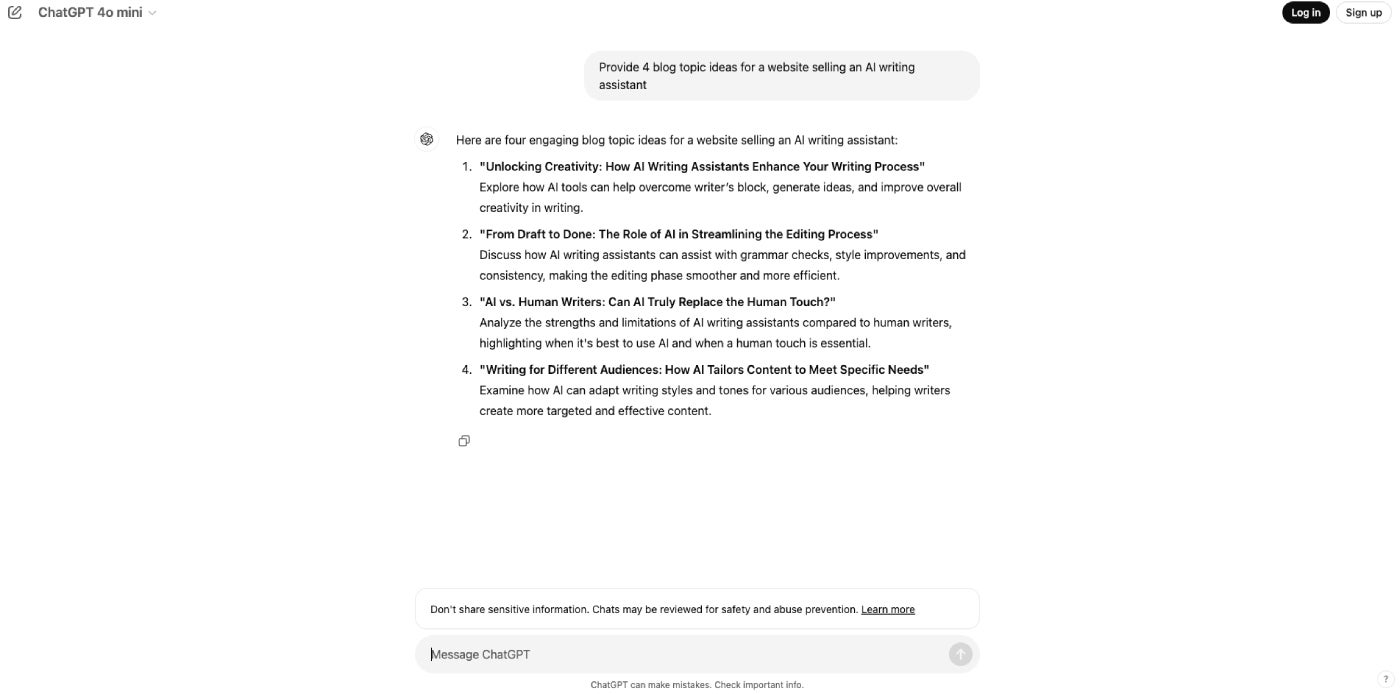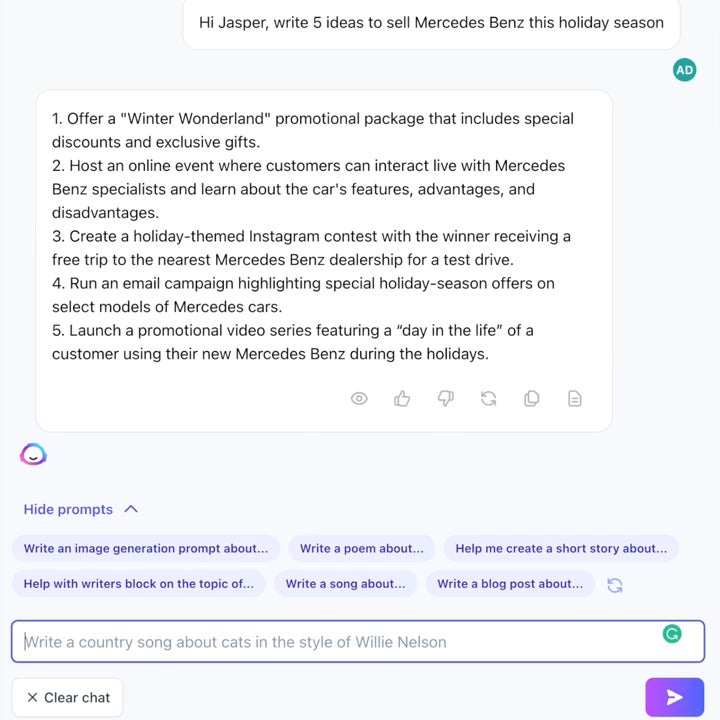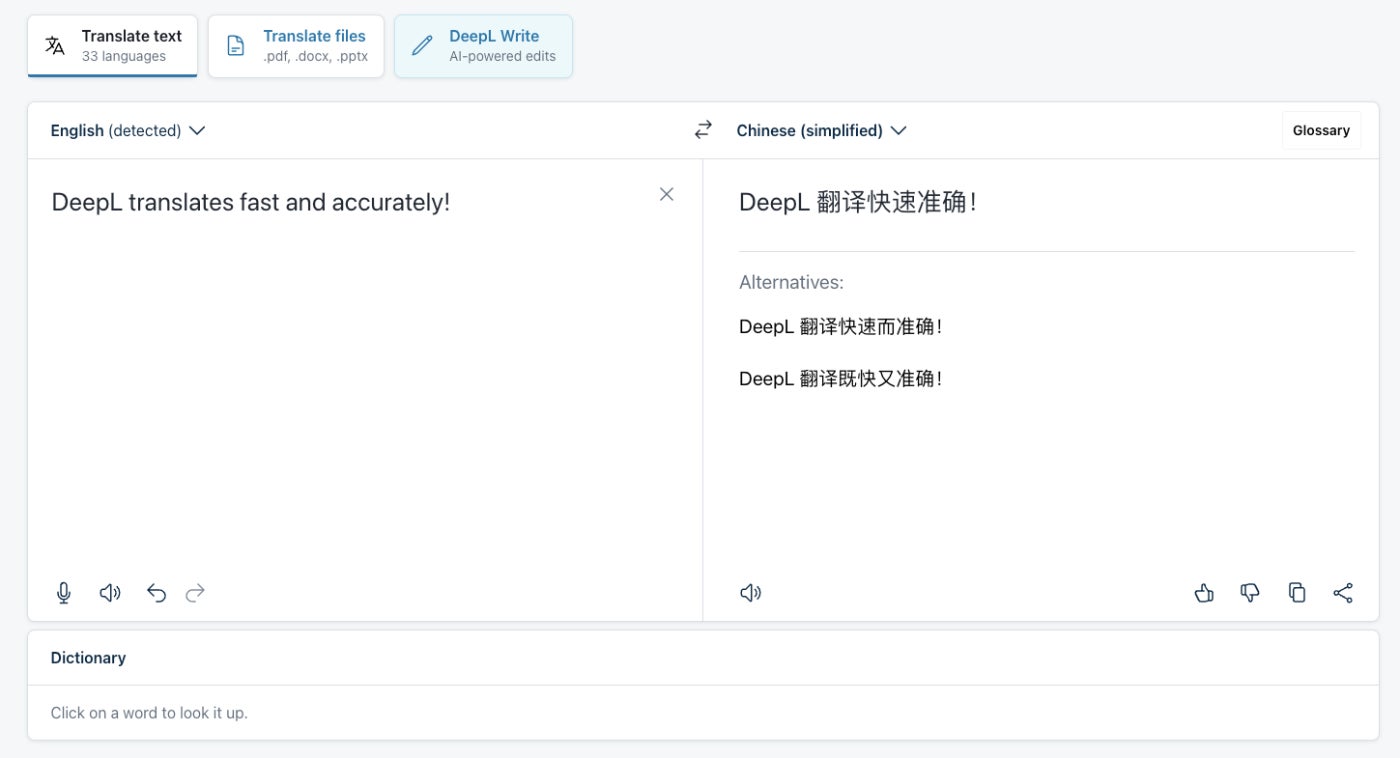Over the past two years, the market has been flooded with sparkly artificial intelligence tools that promise to improve our writing. Generative AI’s primary function is content creation, and chatbots are its most accessible form, so it is not surprising that the number of so-called “copilots” has grown quickly.
However, many are based on the same large language models and produce varying results. It is widely accepted that, without the human touch, AI favours cliched, repetitive content. This is especially the case for tasks used in a professional setting, such as drafting emails and marketing content.
Saying that, bespoke AI writing aids can be beneficial when used correctly. They can significantly speed up tasks, highlight grammatical errors you didn’t notice, keep your copy’s style on-brand, formulate scattered ideas, and help you overcome writer’s block. The best tools will also gear the user away from generic content that both puts off readers and flags AI detectors.
To help writers cut through the noise and find the AI that will do the best with the task at hand, TechRepublic has compiled a list of the top five tools for different writing tasks.
- Best for spelling and grammar: Grammarly
- Best for generating ideas: ChatGPT
- Best for creating marketing content: Jasper
- Best for emails and everyday tasks: Flowrite
- Best for translation: DeepL Translate
SEE: Scale Your SEO Writing With This AI-Powered Tool for Google Sheets
Best AI writing tools: Comparison table
| Tool | What it does | Cost | LLM |
|---|---|---|---|
| Grammarly | Checks spelling, grammar, clarity, and style. | Free for basic plan. | Proprietary. |
| ChatGPT | Powerful, multipurpose chatbot. | Free for basic plan. | GPT-4. |
| Jasper | Produces written and visual content in a brand’s style. | $39/£30 per month, per user. | GPT-4. |
| Flowrite | Writes emails, social media posts, and other everyday messages. | $5/£4 per month for 15 messages. | GPT-3. |
| DeepL Translate | Accurately translates text into 30+ languages. | Free to translate up to 25,000 characters a day; $28.74/£22.18 per month for unlimited. | Proprietary. |
Best for spelling and grammar: Grammarly

Grammarly is one of the most well-known writing aids. It has been around since the pre-ChatGPT era, aiding users with their spelling and grammar wherever they’re typing, be it Word, Gmail, Teams, or just their to-do list. Additionally, the Grammarly widget will include suggestions on sentence structure, style, and clarity, on top of highlighting the typical typos and misplaced apostrophes. You can apply these edits with just a click.
This writing tool goes deeper with its suggestions than a simple spellchecker, especially if you upgrade to Pro level. One of the coolest things I’ve noticed is how it can direct you away from unconscious biases in your writing, such as suggesting “spokesperson” over “spokesman.” But it can also highlight “weak” choices of adjectives and when a more optimistic, convincing, formal, or otherwise appropriate word could be used within the context of the sentence.
Grammarly is more powerful than other AI writing assistants, in part, because it uses a proprietary LLM, rather than relying on offerings from OpenAI or another tech giant. Plus, if you like chatbots, it has also recently added the GrammarlyGO writing assistant that can respond to prompts based on your text.
Price
Free for basic plan. Pro level costs $12/£10 a month and includes plagiarism detection, tone adjustment, sentence rewriting, and more.
Top features
Spellchecker, plagiarism checker, personalised weekly email with writing stats.
Pros and cons
| Pros | Cons |
|---|---|
| Regarded as the most accurate tool for spelling and grammar. | Poor for fiction writing. |
| Provides explanations with each suggestion. | Over-reliance can make text read generically. |
Best for generating ideas: ChatGPT

By now, it would take a dedicated technophobe to have not heard of OpenAI’s ChatGPT. The chatbot has become almost synonymous with generative AI, since its release in November 2022 brought the power of the technology into the public consciousness. While it has brought about much valid criticism regarding its hallucinations, biases, security issues, and environmental impact, it can certainly prove helpful when writing if used responsibly and smartly.
ChatGPT’s intelligence means that it can interpret disparate ideas or half-baked questions, so it is useful for brainstorming. For example, if there’s a word on the tip of your tongue, you can prompt the bot with what it sounds like, the letter it starts with, and a general definition, and it is likely you’ll get your answer. The chat interface makes it easy to build on ideas, and the LLM’s wide breadth of knowledge means it can give you a starting point for almost any topic.
However, those that use ChatGPT regularly can quite easily spot its telltale signs; lists of threes, bullet point lists, “in the ever-evolving landscape,” to name just a few. This means that it is unwise to copy and paste large chunks of outputted text without any amendments. ChatGPT’s ideas are also often basic and vague, as everything it generates is based on already-published text, so use with caution.
SEE: ChatGPT vs Google Gemini (2024): What Are the Main Differences?
Price
Free, for the most part. If you would like access to OpenAI’s most powerful LLMs, then you will need at least a “ChatGPT Plus” membership, costing $20/£16 a month.
Top features
GPT-4 access, DALL-E image generation for paid users.
Pros and cons
| Pros | Cons |
|---|---|
| One of the most intelligent LLMs available for personal use. | Its default output is recognisable in style, so should be edited before publication. |
| Useful for overcoming writer’s block, as it can suggest starting points. | Prone to inaccuracies when asked factual questions. |
Best for creating marketing content: Jasper

Unlike ChatGPT and Grammarly, Jasper is intended to aid writers working in a specific industry: marketing. Users will feed it information about the company, be it tone of voice or product details, as “memories” to draw from. Then, its chatbot interface can respond to prompts asking for blog and social media posts, product descriptions, emails, scripts, and other marketing content.
On top of being knowledgeable of the products and services, Jasper’s company-specific training means it can maintain a consistent brand tone when generating new copy. This avoids the common pitfall of ChatGPT, where output can seem generic and clearly AI-generated.
There are several prompt templates for tasks like blog post outlines and Facebook ads, so you don’t need to repeat yourself. Plus, you can input keywords to generate content optimised for search engines. Templates can be used consecutively; for example, an AI-generated outline can be followed by generating full paragraphs for a post, allowing marketers to complete the process hands-free. However, without the human touch, the output can still seem stiff and unoriginal, so some edits are recommended.
Price
$39/£30 per month, per user for the most basic version.
Top features
Prompt templates, ability to provide brand-specific training data, AI art generator.
Pros and cons
| Pros | Cons |
|---|---|
| Ability to be trained on company information. | Can still output generic content that requires edits. |
| Designed specifically for marketers. | Several limitations on the Creator and Pro pricing plans. |
Best for emails and everyday tasks: Flowrite

If you’re looking for an AI writing tool to support repetitive corporate tasks, such as writing emails, instant messages, and other communications, the best available is Flowrite. The web app or Chrome extension can “read” any email or message visible on screen, picks up the necessary inputs, and presents a text input box as a widget. The user just needs to enter a few words — for example, “accept invite” — as a prompt to generate a fully formulated response to the on-screen message.
Flowrite works with most email clients, as well as X, LinkedIn, MailChimp, Messenger, and more. Flowrite also has templates for the most common types of messages, such as prospecting sales and scheduling meetings, which can be tailored and continuously used as responses to save further time. However, in September 2024, Flowrite was acquired by Maestro Labs, which will be incorporating it into its email generating AI tool, MailMaestro. Therefore, there could be some changes in the near future.
Price
$5/£4 per month for 15 messages. Unlimited messages costs $30/£23 per month.
Top features
Message templates.
Pros and cons
| Pros | Cons |
|---|---|
| Saves time writing emails and messages across platforms. | Limited to English. |
| Cheapest plan is very restricted. | There could be changes soon, given the acquisition. |
Best for translation: DeepL Translate

Translation plays an important part in many roles, be it for recruitment, marketing, sales, or media relations. However, if an employee relies on online tools to communicate with international clients or prospects, it opens them up to errors. Such errors could merely lead to an awkward misunderstanding, but it might also lose a sale or cause reputational damage. While hiring a professional translator is the most reliable option for avoiding these outcomes, when time is of the essence, an AI tool can suffice, such as DeepL Translate.
DeepL is based on a proprietary LLM, and many users say it surpasses competitors such as Google Translate and ChatGPT in understanding acronyms, jargon, and other non-literal language. It also takes into account the context, i.e. the prior sentences, as it translates a passage. Its main shortfall is that it can only translate in 33 languages, with the majority European.
Price
Free to translate up to 25,000 characters a day; $28.74/£22.18 per month for unlimited.
Top features
Understanding context and non-literal phrases.
Pros and cons
| Pros | Cons |
|---|---|
| Understands jargon and non-literal translations. | Limited number of languages, with the majority European. |
| Takes context into account when translating subsequent sentences. | Membership fee, when its competitors are free. |
What are the benefits of using AI writing tools?
AI writing tools can accelerate tasks. You probably don’t realise how much content you write on a daily basis until you have access to a tool that can expedite this process for you. While speed isn’t everything and a high level of quality control is always recommended when, say, putting together an email for a CEO, those that forgo the latest tools risk falling behind competitors.
Critics may assume that the use of AI in any writing will give it “ChatGPT voice,” making it generic and lifeless while possibly negatively impacting its SEO. However, AI tools are useful for more than quickly producing large bodies of text. These tools can also generate ideas, help refine sentence structure, identify subtle grammatical errors, and more. See if they can help you with your day-to-day by testing out the free version of one on this list.
SEE: Generative AI Policy
Can AI replace writers?
Well, as a human writer myself, I certainly hope not!
As mentioned, over-reliance on AI for writing is dangerous, as it adds a recognisable robotic tone of voice that is off-putting to readers. The technology is also fundamentally incapable of producing original ideas, so any writing it produces from scratch isn’t going to be more useful than the best answer that’s already out there. Those who write as part of their job should only use the technology as an assistant — rather than a replacement for their pen — and employers share this view.
Methodology
We assessed a number of AI writing tools used for the most common use cases. To produce this list of the top five, we examined the reliability and popularity of the provider, the features they offer in comparison to their top competitors, and the cost.


